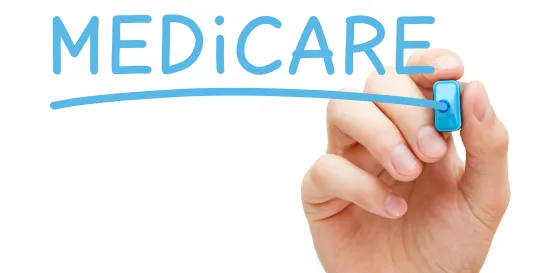Background
On January 9, 2024, the Centers for Medicare and Medicaid Services (CMS) approved the New York State (NY) 1115 Medicaid waiver “Medicaid Redesign Team” (MRT). The MRT is a long-standing waiver in NY that has continuously evolved to improve the administration, structure and financing of the NY Medicaid program; enhance Medicaid beneficiaries’ access to services; and improve health outcomes across the state. The recently approved waiver represents the next step in Medicaid redesign in NY and builds on the previous Delivery System Reform Incentive Payment (DSRIP) program.
The MRT was initially submitted to CMS on September 2, 2022, and requested $13.52 billion over five years. CMS’s approval of the waiver took more than one year, and the approval is smaller in scale, design and footprint than what was proposed in 2022.
As proposed, the MRT aims to advance health equity, reduce health disparities, support the delivery of health-related social needs (HRSN) services and promote workforce development. It will be effective through March 31, 2027.
Key initiatives of the approved waiver include HRSN, Health Equity Regional Organization (HERO),
Medicaid Hospital Global Budget Initiative, Strengthen the Workforce and Provider Payment Increase. However, some components of the original waiver submission are not included, or not as robust.
Also approved within the MRT was a partial approval of an 1115 waiver amendment relating to behavioral health, in particular authorization of federal Medicaid matching funds for reimbursement to institutions for mental diseases for individuals with a substance use disorder. This article does not focus on this portion of the waiver approval.
The MRT is designed to set the stage for NY participation in a new Center for Medicare and Medicaid Innovation (CMMI) model: the States Advancing All-Payer Health Equity Approaches and Development (AHEAD) model, discussed in more detail below.
This article reviews the major initiatives included in the MRT, components of the MRT that were excluded from the approval, next steps for the AHEAD and Making Care Primary models and implications for stakeholders.
KEY INITIATIVES IN THE MRT APPROVAL
Health-Related Social Needs
A primary initiative in this waiver affords NY the authority to create social care networks, which are contracted entities in each of the state’s nine regions that work in conjunction with managed care plans to provide Medicaid enrollees with HRSN screening and referral services. CMS has approved $500 million to develop the infrastructure needed to support HRSN services (technology, workforce, stakeholder convening, business development) and $3.173 billion for the provision of increased coverage of certain services that address HRSN.
The state is required to align clinical and health-related social criteria across services and with other nonMedicaid social support agencies, to the extent possible. HRSN services must be clinically appropriate for the beneficiary and based on medical appropriateness using clinical and other HRSN criteria.
The state will create two levels of HRSN services. All Medicaid beneficiaries will receive Level 1 case management services. Level 1 services are referrals to existing state, federal and local programs that are separate from the newly authorized HRSN set of services. Level 2 HRSN services will be provided to targeted eligible beneficiaries enrolled in Medicaid managed care, such as high utilizers, those with substance use disorders, those with serious mental illness or intellectual and developmental disabilities, certain children, pregnant people up to 12 months postpartum and post-release criminal-justice-involved people with serious chronic conditions. A comprehensive list of the populations that will be eligible to receive Level 1 and Level 2 HRSN services will be described in the post-approval Protocol(s) for HRSN Services and Infrastructure, subject to CMS review and approval.
Level 2 HRSN case management services include the following:
- Outreach and education, including linkages to other state and federal benefit programs;
- Benefit program application and fees assistance;
- Connections to providers, managed care organizations, crisis services and behavioral health services;
- Connections to employment, education, childcare and legal assistance;
- Interpersonal violence resources; and
- Follow-up after services and linkages.
The state may cover the following HRSN services:
- Housing supports,
- Levels 1 and 2 case management,
- Nutrition supports (g., education, delivery of prepared meals, food prescriptions, fresh and nonperishable groceries),
- Cooking supplies (g., pots and pans, utensils, microwave, refrigerator), and
- Private and public transportation to covered HRSN services and case management activities.
Housing supports are some of the more extensive offerings. Services include, but are not limited to, air conditioners, humidifiers, air filtration devices and asthma remediation, refrigeration units, accessibility ramps, handrails, grab bars, repair or improvement to ventilation systems, mold/pest remediation, recuperative care and short-term pre-procedure and post-hospitalization housing for individuals experiencing homelessness, rent or temporary housing for up to six months for individuals who are homeless or transitioning out of institutional care/congregate settings, pre-tenancy and tenancy sustaining services, and housing transition navigation and moving costs.
Among the nutrition supports, CMS approved the potential for individuals with high-risk pregnancies (and their households) to receive nutrition interventions (i.e., pantry stocking, food prescriptions or meal delivery) for up to the length of the pregnancy, and then up to two months postpartum, for a total of 11 months.
HRSN services will be provided through a combination of the fee-for-service and managed care delivery systems, with case management and referral services administered through social care networks. The state will initially operationalize the benefits through non-risk arrangements in managed care, effective April 2024, with the aim of integrating the benefits into full risk managed care by March 2027.
The state must track beneficiary HRSN eligibility levels, participation, screening, rescreening, receipt of referrals, recurring nutrition services and social services over time. It must also narratively report on the adoption of information technology infrastructure to support data sharing between the state or partner entities assisting in the administration of the demonstration and social services organizations, and the contracted providers of applicable services (e.g., managed care plans and their contracted HRSN providers). The state must additionally monitor and provide narrative updates on its progress in building and sustaining its partnership with existing housing and nutrition agencies.
Health Equity Regional Organization
The HERO is a contracted statewide entity tasked with reducing health disparities, advancing health equity and supporting the delivery of HRSN services based on regional factors. The HERO must be independent from the state and other government entities.
The HERO will process data gathered from managed care organizations, providers and other healthcare industry participants and conduct regional needs assessments. By way of these activities, the HERO will be able to identify where health outcomes fall short, where the healthcare workforce is lacking and other information relevant to the HERO’s stated goals. The HERO will report data processing results, make its regional assessments publicly available and engage with the public by convening regional stakeholder engagement sessions. The HERO will also publish equity plans and make value-based payment arrangement recommendations, while working to incorporate HRSN services into such arrangements.
CMS authorized the HERO to spend up to $125 million on these efforts, compared with the state’s initial request of $293 million for the HERO.
The MRT does not provide specifics regarding the HERO’s structure. The initial submission stated that “there would be one HERO per region and nine regions, with New York City potentially being subdivided into multiple regions.” However, the MRT provides that there will be one statewide HERO entity that will develop regionally focused approaches.
It is also important to note that the waiver proposed in 2022 included details on a coalition of stakeholders that make up the HERO, such as managed care organizations, providers and beneficiaries. As noted in the initial submission, the HERO model builds on the DSRIP Performing Provider Systems, which were 25 local collaboratives of safety net provider partnerships awarded the ability to earn performance incentive payments. Additional details regarding the HERO likely will be provided at a later date.
Medicaid Hospital Global Budget Initiative
The hospital global budget initiative (GBI) consists of two elements: initial incentive funding for eligible and participating hospitals for the future adoption of a formal global budget, and the framework and requirements for launching a formal hospital GBI beginning April 1, 2027.
The incentive funding consists of $2.2 billion allocated over four demonstration years, or $550 million per demonstration year. Hospitals eligible for the incentive funding are private nonprofit hospitals in Brooklyn, Bronx, Queens and Westchester Counties. These hospitals must have a Medicaid and uninsured payer mix of at least 45% and an average operating margin that is less than or equal to 0% over the past four years (calendar years 2019–2022) based on audited Hospital Institutional Cost Reports (excluding COVID-19 relief funding and state-only subsidy). They also must have received state-only subsidies due to financial distress in state fiscal year 2023 and/or 2024.
Hospitals that are eligible and elect to participate in the GBI will receive incentive funding from the state for January 9, 2024, through March 31, 2027. The chart below shows the expected distribution of funding for that period. These payments are not related to patient care or services and are in addition to traditional Medicaid funding. However, from January 2024 through March 2027, the state and CMS will work to officially launch the GBI on April 1, 2027.
Chart 1. Distribution of Incentive Funding from January 9, 2024, through March 31, 2027
| Demonstration Year (DY) | DY 0 | DY 1 | DY 2 | DY 3 | Total |
| Timeframe |
1/9/2024 to 3/31/2024 |
4/1/2024 to 3/31/2025 |
4/1/2025 to 3/31/2026 |
4/1/2026 to 3/31/2027 |
|
| Funding Amount | $550 million | $550 million | $550 million | $550 million | $2.2 billion |
The GBI’s goal is to improve quality of care and adopt an alternative payment model that will stabilize finances of certain safety net hospitals and advance accountability and health equity. However, the MRT approval does not include the specific details of the global budget structure.
From January 9, 2024, through March 31, 2027, the state will be required to submit a plan to implement the GBI and include information such as the Medicaid services proposed under the hospital global budget, the methodology for constructing the hospital global budget, the proposed methodology to determine updates for the budget, a proposal for adjustments that align with the CMMI AHEAD model hospital global budget methodology for Medicare fee-for-service, and a proposal for a quality and health equity improvement strategy.
As a result, the specific details of the global budget likely will be adopted to fit with the structure of the AHEAD model. Under the model, states will partner with hospitals and primary care practices to redesign care that will:
- Focus resources and investment on primary care services, giving primary care practices the ability to improve care management and better address chronic disease, behavioral health and other conditions;
- Provide hospitals with a prospective payment stream via hospital global budgets, while including incentives to improve beneficiaries’ population health and equity outcomes;
- Address healthcare disparities through stronger coordination across healthcare providers, payers and community organizations in participating states or regions; and
- Address the needs of individuals with Medicare and/or Medicaid by increased screening and referrals to community resources such as housing and transportation.
In the AHEAD model, participating hospitals will receive a fixed payment amount in advance of a prospectively set budget per year. These payments would be for both traditional Medicare and Medicaid (similar to the structure outlined in the MRT). States also will recruit primary care providers to participate in multi-payer primary care transformation, which will include increased investment by traditional Medicare and an advanced primary care program aligned with Medicaid and traditional Medicare.
CMS will select eight states to participate in the model and will award each state up to $12 million for implementation. States are required to submit an application for first two cohorts of the AHEAD model by March 18, 2024. For the third and final cohort, the application is due August 12, 2024. CMS is expected to release additional details on the AHEAD model’s financial structure in February 2024. Stakeholders should expect NY to submit an application for the model, as the waiver aligns with the structure of the AHEAD model and the AHEAD model will provide the state with additional federal funding.
Should NY not participate in the AHEAD model, the global budget design in NY would be a Medicaid-only global budget for the participating hospitals.
Strengthen the Workforce
CMS authorized up to $694 million over three years to support workforce recruitment and retention to promote the increased availability of certain healthcare practitioners who serve Medicaid and demonstration beneficiaries. The state will implement two workforce initiatives:
- Student Loan Repayment for Qualified Providers. This program will provide loan repayment for healthcare professionals working in certain healthcare workforce shortage professions who make a four-year full-time work commitment to a practice panel that includes at least 30% Medicaid and/or uninsured members. The loan repayment program will provide up to $300,000 in loan repayment for psychiatrists (with a priority on child/adolescent psychiatrists), up to $100,000 for primary care physicians and dentists, and up to $50,000 for nurse practitioners and pediatric clinical nurse specialists.
- Career Pathways Training (CPT). This program will increase the allied health and other healthcare workforce by funding training and education that focuses on career advancement and unemployed individuals in order to create a reliable healthcare workforce pipeline to address health workforce shortages throughout the state. Eligible individuals must have a three-year commitment of service to healthcare providers enrolled in the Medicaid program that serve at least 30% Medicaid members and/or uninsured individuals to participate in the program. The state will contract with workforce investment organizations to implement the CPT program. Specific types of professionals and credentials included for the training include licensed practical nurse, associate registered nurse, registered nurse to bachelor of science in nursing, nurse practitioner, physician assistant, licensed mental health counselor, master of social work, credentialed alcoholism and substance abuse counselor, certified pharmacy technician, certified medical assistant, respiratory therapist, community health worker and patient care manager/coordinator.
A total of $48.3 million will be available for the student loan program, and $645.75 million will be available for the CPT program. The workforce initiative is significantly smaller than the $1.5 billion requested in the original waiver submission. The original waiver submission included $1 billion for quality improvement and health equity-related interventions, and $500 million for workforce training. The approved waiver focuses on the workforce training components of the request.
Provider Payment Increase
Also included in the waiver approval is a provision for provider payment increases related to primary, behavioral health and obstetric care. The waiver specifies that the state will increase and (at least) subsequently sustain Medicaid fee-for-service provider base rates and require any relevant Medicaid managed care plan to increase and (at least) subsequently sustain network provider payment rates, by at least two percentage points in the ratio of Medicaid to Medicare provider rates for one of the following service categories: primary care, behavioral health care or obstetric care. This will be required if the average Medicaid to Medicare provider payment rate ratio for a representative sample of any of these three categories of services is below 80%. If the average Medicaid to Medicare provider payment rate ratio for a representative sample of any of these three categories of services is below 80% for only the state’s Medicaid fee-for-service program or only Medicaid managed care, the state will only be required to increase provider payments for the delivery system for which the ratio is below 80%. The state will be required to invest $200 million into this payment increase, regardless of whether the level of payments is above 80% for these service categories, and the state cannot decrease payments for other Medicaid services to finance the increase.
Within 90 days of the MRT’s effective date, the state must submit to CMS average Medicaid to Medicare fee-for-service and managed care provider rate ratios for each of the three service categories. Following that, the state will submit to CMS for review a plan identifying payment increase methodology, including the Medicaid code set to which payment rate increases will be applied; code level Medicaid utilization; Medicaid and Medicare rates for the same or similar Medicare billing codes; and other data used to calculate the ratio, calculate the methodology and specify the effective date for the increase.
ELEMENTS NOT INCLUDED IN APPROVAL
As noted, the waiver approval is significantly smaller than the proposed waiver submission. Many initiatives were not included in the submission and are discussed in more detail below.
Digital and Telehealth Initiative
The state had proposed an extensive plan to create a digital and telehealth infrastructure. This included a $300 million plan to expand use of telehealth, including costs associated with training and infrastructure changes. Specific telehealth investments included funding tablets and telehealth kiosks, and funding various provider facilities and types to expand telehealth access points. These initiatives are not included in the MRT.
Transitional Housing Initiative
The state had requested $1.57 billion to implement a comprehensive housing initiative. This proposal would have provided community transitional services, tenancy supports and medical respite programs to approximately 30,000 individuals over five years. Elements of the housing proposal are included in the HRSN section of the MRT (discussed above). However, some elements were omitted or significantly scaled back compared to the proposal. For example, respite programs are not included in the MRT, and the Enhanced Transitional Housing Initiative is not specifically included, nor is the accompanying creation of a unified transitional housing and respite services menu. Certain elements of the initiative are included, however, such as identifying high utilizers or those living in an institutional setting for transitional housing services.
Criminal Justice Initiative
The waiver proposal included an expansion of coverage for certain Medicaid services for justice-involved individuals 30 days prior to release. (Currently, states are not eligible to receive federal matching funds for services provided while an individual is in a public institution, such as jail or prison.) The proposed waiver requested $750 million for the expansion of services to the justice-involved population. However, this proposal was not included in the MRT. As noted above, post-release criminal-justice-involved individuals with serious chronic conditions are eligible for the Level II HRSN services. The MRT notes that the state and CMS “continue to review the state’s request for limited coverage of certain services furnished to certain incarcerated individuals for up to 90 days immediately prior to the beneficiary’s expected date of release.” Continuous Coverage for Children
The MRT notes that the state intends to submit a waiver amendment that will provide continuous Medicaid eligibility to children up to age six. This amendment is expected in early 2024 but has not yet been submitted at this time.
Serious Mental Illness Provisions
As noted, a separate behavioral health 1115 waiver was also partially approved in the MRT. However, the elements of that waiver relating to individuals with serious mental illness were not approved in this waiver.
IMPLICATIONS FOR STAKEHOLDERS
The MRT has broad implications for stakeholders across NY. While less ambitious than the initial submission, the MRT will create significant opportunities to advance health equity initiatives, improve health outcomes and initiate a global budget payment system for certain hospitals. The MRT also showcases the complicated structure of NY Medicaid. The lack of guidance in certain areas and the requirement for the state to take further action to set the stage for implementation of the MRT provisions also may make it difficult to fully understand the implications of participation in many of the MRT programs. Nonetheless, the MRT represents a significant investment in addressing the social needs of at-risk populations and the healthcare workforce. The clear step toward preparing NY for participation in the AHEAD model also represents a potentially fundamental shift in the way healthcare services are paid and in the underlying business incentives that drive the healthcare market.






 />i
/>i

